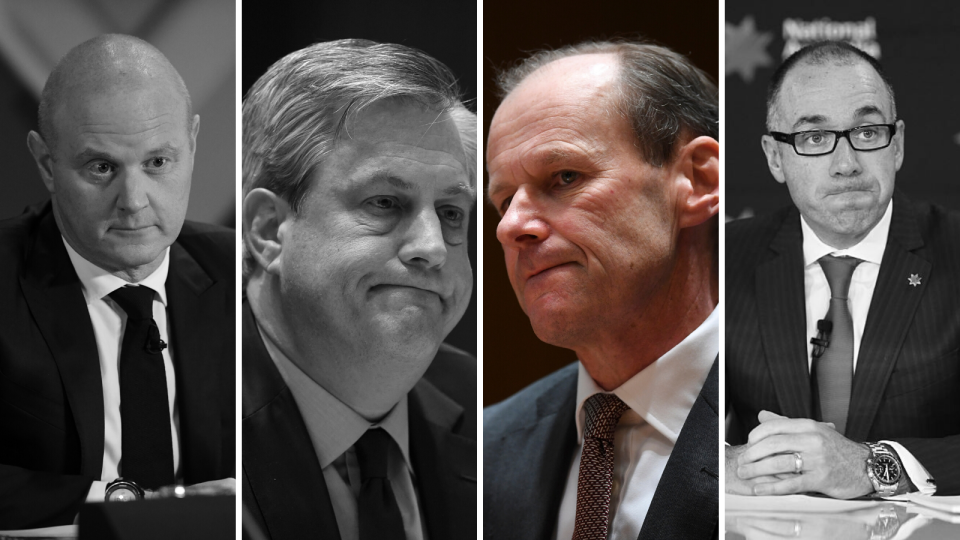Why are we overpaying underperforming CEOs?

The Australian business sector is struggling with an underpayment and an overpayment problem at the very same time.
Aussies at the lower end of the corporate food chain battle are battling major employers – who are making ‘mistakes’ because payroll departments are being squeezed dry – for their rightful wages.
Meanwhile, the chiefs of outgoing Big Four Banks have lost their jobs, and yet they’re still walking away with outsized, million-dollar pay-packets.
Related story: These are Australia’s highest-paid CEOs
Related story: ‘Culture of entitlement’: Royal Commission had no effect on executive bonuses
Related story: All the Big 4 bank CEOs have taken massive pay cuts
Westpac CEO Brian Hartzer officially stepped down from the top job yesterday, and he departs with his full $2.7 million salary – and that’s without any of his bonuses. But in the year to September this year, Westpac’s profitability fell 16 per cent.
ANZ CEO Shayne Elliott took home $4.01 million in 2019 while the bank’s retail and commercial cash profit dropped 10 per cent.
NAB’s now ex-CEO Andrew Thorburn departed the bank in January this year as the bank’s leadership team was thrown into turmoil after being singled out in the Banking Royal Commission’s final report by Royal Commissioner Kenneth Hayne, who was “not as confident as I would wish to be that the lessons of the past have been learned”.
Meanwhile, the big bank’s full-year net profit tumbled nearly 14 per cent this year.
And former Commonwealth Bank CEO Ian Narev left the company, but not before he was paid nearly $50 million during his 5-year time at the company. Australia’s largest bank was left reeling after financial intelligence watchdog AUSTRAC launched civil proceedings against it for 53,700 breaches of money laundering and counter-terrorism-financing laws.
How did we get here?
How did these pay-packets get so overblown?
The first thing to know is that CEOs are paid by their board of directors, and these boards look like “cosy clubs”, according to Monash University department of management professor Mathew Hayward.
“These directors are very closely networked. They talk with each other all the time and they derive conventions about what CEOs should be paid,” he told Yahoo Finance.
For example, if you examine how much bank CEOs are paid, they tend to be around the $5- or $6-million range, he said, adding that board directors will reference the compensation of CEOs from other companies in determining the pay of their own CEO.
“These [cosy agreements] are informal understandings that if one CEO gets paid a certain amount, then the other CEO should be getting paid in that ballpark.”
Three categories of CEO compensation
According to the Monash University professor, CEO pay can be split up into three types: base salary, short-term incentives (STIs) and long-term incentives (LTIs).
When bank CEOs have their ‘pay’ cut, it’s their bonuses they’re being denied. “But that’s in the context of CEOs already being incredibly well-paid for poor company performance,” he said.
“That base salary is the salary that needs to be addressed.”
CEOs are too removed from the performance of the company they’re actually leading and need to act as though they are owners of the business.
“There’s no owner that’s going to pay him or herself $5 million a year when the business is underperforming,” he said. “So we need to move away from this idea that the CEOs are entitled hired guns and have them share in the consequences of the performances of the firms they’re supposed to supervise.
“It’s pretty obvious but it’s not happening in Australia today.”
Although CEOs are foregoing their bonuses, they’re still being “incredibly well-paid” to supervise an “underperforming operation”.
What needs to change?
Hayward described the relationship between the CEO and the chairman, the head of the board of directors, as “pretty cosy”.
Indeed, when NAB CEO Andrew Thorburn was effectively axed in February, chairman Ken Henry went with him.
Westpac lost not only Brian Hartzer but its chairman Lindsay Maxsted, too.
“He and Brian Hartzer had a very close and a mutually supportive relationship where Hartzer would support Maxsted’s compensation, and Maxsted would support Hartzer’s compensation. With the closeness between the two, it’s very difficult to exact change.”
Investors and shareholders are in a position to proactively agitate for change, he added.
“The composition and culture of those boards of directors needs thorough review,” he said. “The fundamental way in which CEOs are compensated hasn’t changed at all.”
Earlier this year, an analysis by the Australian Council of Superannuation Investors (ACSI) of ASX100 CEOs found that only one CEO did not receive a bonus for the 2018-19 financial year, against a backdrop of the Banking Royal Commission which exposed systemic leadership failures.
“The way bonuses are being handed out suggests there is a culture of entitlement whereby supposedly ‘at risk’ pay is not very risky at all,” said ACSI CEO Louise Davidson at the time.
CEOs need to take more responsibility by being more ‘vulnerable’, where vulnerability means CEOs’ perception that their own assets and livelihood would be affected by company losses, said Hayward.
‘Vulnerable’ CEOs do their jobs better, including responding more quickly to change; having better relationships and are better at getting to the bottom of problems; are less prone to hubris; and create better company culture, he wrote in a piece by Monash University.

 Yahoo Finance
Yahoo Finance 

